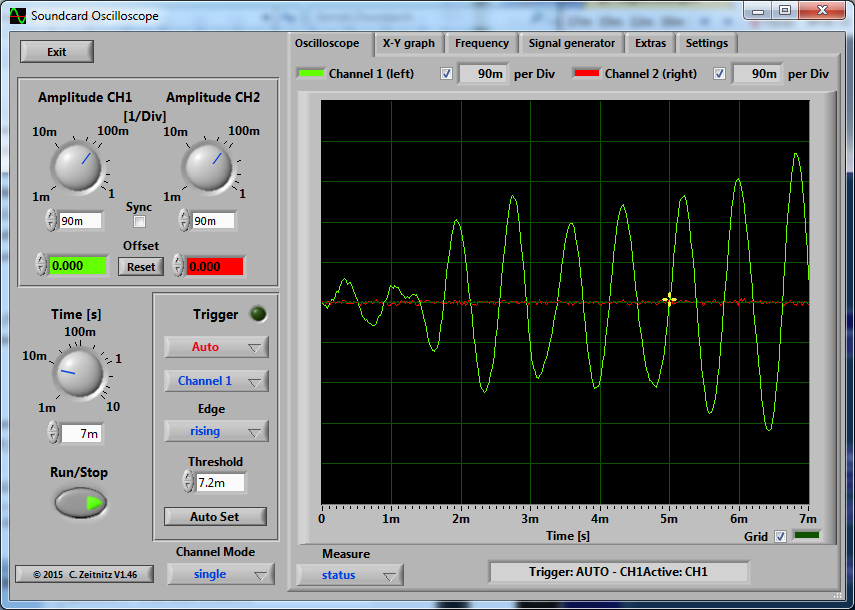
Update! SignaLink and Other USB Digital Interfaces – Huge Bug + Permanent Fix for Amateur Radio Digital Modes
If you had seen the previous version of this page, you’ve read about the problem with the TI chip that is very negatively affects the SignaLink and many other USB digital interfaces.
KD9DAL, Jon, who originally discovered this problem has continued his research and has now developed a permanent solution that does not require constantly fixing the same problem every time you reboot or stop using the sound device.
You may have also seen several contradictory comments made by some hams such as W4TV that said that the fix was an error.
Apparently, the statement that the fix is an error was an error.
W4TV ‘s response and Jon’s response to W4TV statements can all be read and viewed in detail by clicking Point and Counterpoint.
Since so many folks only saw W4TV’s statements, I think it is important to see the whole story. In all fairness to W4TV, all of this is still in flux as various components, operating systems and hardware variations are being tested.
The bottom line here is that there is a real problem that is affecting a whole lot of us who love digital communications on ham radio.
Jon’s solution solves this problem dramatically in a lot of cases. It’s probably worth your time for you to try this quick fix to see if you can see some dramatic improvement in your decodes.
If it works for you like it did for me – fantastic!
If not, I bet having the free Soundcard Oscilloscope software referenced below to help you make sure that you never flat top your signal will make all of this worth your time – one way or another.
Here’s The Executive Summary
in reading several of the responses I received from publicizing this problem and fix, I noted that several folks wanted a quick recipe solution that did not require all the details. Toward that goal, I offer you this easy 15 point executive summary:
- Thankfully you can remove the microphone boost gain added by Windows manually and it will stick and be remembered and you will never have to touch it again.
- In Windows control panel, click sound.
- Click on the recording tab.
- Keep an eye on the green level meter next to your radio device.
- On the radio device, such as your SignaLink, click properties.
- Then go to the levels tab.
- Right click on the slider and change the value from Percentage to DB.
- If 100% on the slider reads +30db, you are affected by the bug.
- If the device was properly enumerated as a line in device, 100% on the slider would be 0db.
- Now if you have confirmed the device is seen as a microphone and +30db has been added, lower the slider until it reads as close to 0db as possible.
- The closest you will be able to get is most likely -0.4db or so, which is fine and much better than +30.
- That’s it!
- Now Windows is no longer adding it’s own gain, and you can turn your radio’s AF/USB output and/or Signalink RX back up out of its own noise floor.
- Problem solved permanently.
- Get the soundcard oscilloscope software for free that is referenced below and make sure that your SignaLink or other soundcard is never flat topping!
Okay, the above was for those who don’t want to get bogged down in the details – but since most of us hams are somewhat OCD, I strongly suggest that you take the time to watch the below video that has been updated by Jon to reflect the permanent change.
By the way, I have been testing this approach even before Jon publicized them and agree with him that it solved my problems with both of my SignaLinks.
Your mileage may vary. If you have the C chip you probably will not have this problem. If you’ve already upgraded to Windows 10, it’s my understanding that you may longer have this problem. The answer to this last point seems to still be in flux. So, test with an open mind and see if it improves things for you.
Here’s his updated video that explains Jon’s new approach that is a one time fix:
IMPORTANT UPDATE WITH MUCH EASIER AND PERMANENT FIX + RESPONSE FROM TI
Below is Jon’s updated Reddit posting that describes and explains the information and the above video:
—Below text edited with easier, permanent fix—
There’s a bug with the USB audio chipset used in many ham radio sound interfaces that occurs in Windows Vista and later. The affected chipset is the TI PCM2900 series PCM2904 and below, pre-C revisions.
A non-exhaustive list of devices using this chip and therefore have the bug guaranteed:
-
All Icoms with built in USB Audio
-
All Kenwoods with built in USB Audio
-
All Yaesus with built in USB Audio, as well as the SCU-17 Interface
-
All Signalink USB’s
If you have one of these devices, and are on Windows Vista or later, your performance is reduced due to this bug even if you think it’s working fine. Wait until you see your performance afterwards! This is confirmed by Texas Instruments, who never recommended this chipset for use on Windows Vista and later in the first place, and also tested with more than 70 hams who gained massive receive performance after the fix.
THE FIX IN THIS VIDEO IS NOW OUTDATED. I still recommend watching it as it has background information and a thorough guide on how to properly set your audio that helped out many people (especially WSJT-X users), but immediately afterwards watch the update video with the better permanent solution. – Huge bug + fix for amateur radio digital modes (audio levels)
The Bug:
There’s been a few complaints that the bug and fix are only outlined in video form (even if it’s in the first 3 minutes), so I’m writing a text description here. The bug is that this line of TI chipsets identify themselves to Windows Vista and later as microphone devices via the Input Terminal String, even though they are being used as Line In devices. This makes windows add 30db to 50db of gain digitally to the input, clipping your incoming signal. A lot of people I’ve worked with have “worked around” this bug without knowing it by lowering the level slider in windows recording properties panel to negative values, or by turning their Signalink RX knob nearly all the way down, or a combination of both. This is very bad, it reduces the dynamic range of your incoming signal pushing it into the noise floor.
The Updated Fix:
Thankfully you can remove the microphone boost gain added by windows manually and it will stick and be remembered and you will never have to touch it again. In Windows control panel, click sound. Click on the recording tab. Keep an eye on the green level meter next to your radio device. On the radio device, click properties, then go to the levels tab. Right click on the slider and change the value from Percentage to DB. If 100% on the slider reads +30db, you are affected by the bug. If the device was properly enumerated as a line in device, 100% on the slider would be 0db. Now if you have confirmed the device is seen as a microphone and +30db has been added, lower the slider until it reads as close to 0db as possible. The closest you will be able to get is most likely -0.4db or so, which is fine and much better than +30. That’s it! Now windows is now longer adding it’s own gain, and you can turn your radios AF/USB output and/or signalink RX back up out of its own noise floor.
Everyone I have tested with that had the patience to run through the entire procedure for clearing the digital gain and setting levels reported massive improvements in decodes. If the explanation above didn’t make sense or you’re confused or having doubts, I recommend watching the video(s) for a full walkthrough.
Here is a whitepaper from TI outlining the issue and why they clearly do not recommend these revisions of chips for use on Windows Vista or later – Whitepaper
Important takeaway from the paper above – “On the PCM290xB series, the Microphone is identified as the input terminal descriptor. Thus, even though the PCM290xB does not provide a gain control function such as a programmable gain amplifier (PGA), Vista and Windows 7 both automatically give a positive gain on the volume control panel. As a result, the input signal will saturate at even slight recording volume increases”
Here is a thread from 2010 of several developers complaining of this exact issue with their designs – Forum Thread
Small Things I Forgot to Mention in the Video:
-
As previously mentioned the bug is caused by the older revisions of these chips being enumerated as microphone input devices in Windows Vista and later. It’s not Microsoft’s issue as they are treating the suspected microphone input as you would a microphone, however the chips are actually line in devices. TI themselves clearly stated that these chips were not compatible on Windows Vista and above.
-
TI does link a separate driver of their own called the “audio filter driver”, but you do not want this. The chips previously exhibited 1khz noise in certain operating conditions that don’t affect us (8khz sample rate). The filter driver is identical to the MS driver (and still has the bug) except it has a digital 1khz notch filter to try to remove this noise, which is very bad for digital modes.
Thanks! Feel free to post this around to the mailing lists and ham groups, everyone I’ve tested with couldn’t believe how much of a difference they saw. I ask that you link to this Reddit post and not directly to the video so they can see all the information and reports below
Some Other Digital Audio Related Software You Might Want
Here’s a link to the audio level program that he uses in his video:
http://www.darkwooddesigns.co.uk/pc2/meters.html#Digital
Here is a link to a great scope software that you can use to monitor your soundcard levels:
http://www.zeitnitz.eu/scope_en

Leave a Reply
Want to join the discussion?Feel free to contribute!